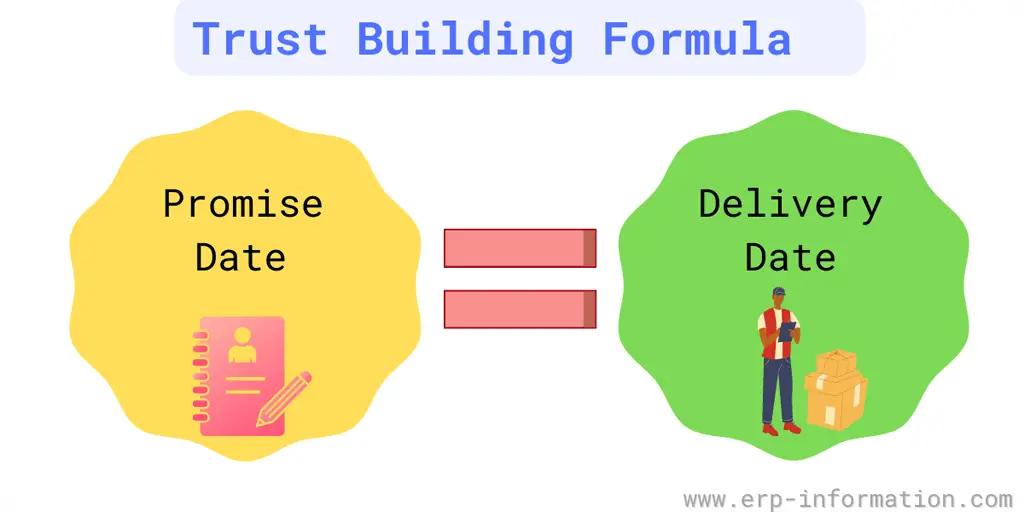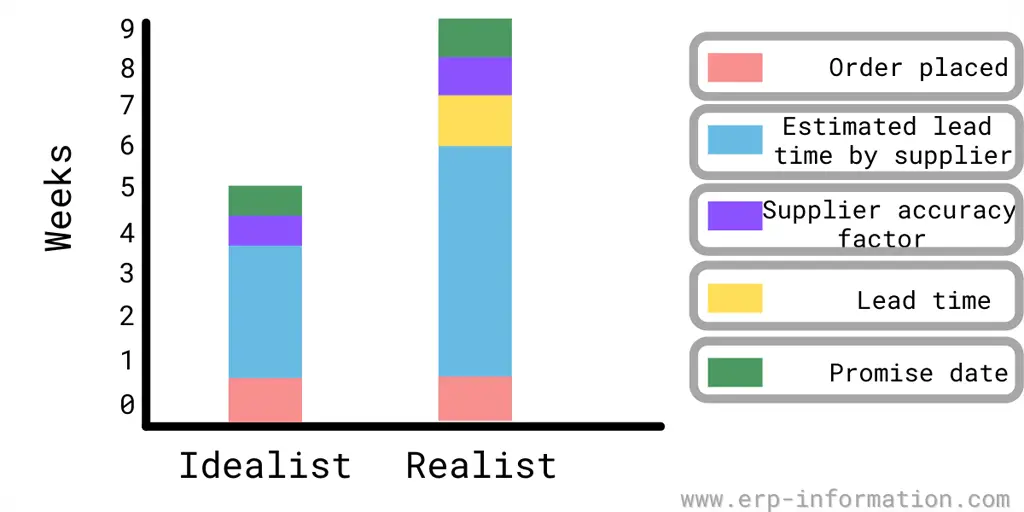Let’s explore a crucial aspect of supply chains — the ‘promise date.’ More than a simple delivery commitment, it’s a symbol of a company’s reliability.
The promise date or ship date is an important term in many industries. It is a critical term that specifies the date of delivery of an order.
This date is given to customers to deliver their orders, and vendors must stick to this commitment. However, either party may agree to change the date before it becomes effective.
This blog post will provide definitions and explanations of the promise date. It also covers calculation, lead time estimation, and do’s and don’ts.
Definition
The promise date holds significant weight in any transaction or contract. It signifies the vendor’s commitment to deliver goods or services to the customer within a specified timeframe.
This crucial date is determined through meticulous planning, taking into account various factors such as production timelines, processing activities, and transit durations to ensure the product reaches the customer on or before the promised date.
For effective management, companies often rely on robust systems like Master Production Schedules (MPS) to track and uphold these promise dates. This approach enables them to monitor and maintain a clear overview of all upcoming commitments within a designated time frame.
Moreover, determining the promise date isn’t just an arbitrary decision; it involves thorough communication and coordination between the vendor and the customer.
Understanding the customer’s requirements, aligning them with production capabilities, and factoring in potential contingencies are crucial steps in arriving at a realistic promise date that both parties can rely on.
In essence, the promise date is a cornerstone in the supply chain, reflecting the vendor’s dedication to fulfilling their commitment to the customer while ensuring operational efficiency and customer satisfaction.
Importance
The promise date is more than just a day; it’s a commitment to customers, a way to keep them happy and build trust. It’s like a special promise to deliver what’s needed when it’s needed, making sure everyone’s satisfied and things run smoothly. It proves to be the key to achieving customer satisfaction and your success ultimately.
Imagine you order something online, and the seller promises it will arrive on a specific date. When they keep that promise, it builds trust. You know you can rely on them. Trust is like the glue that holds business relationships together.
Setting a promise date makes businesses plan things carefully. It ensures everyone is on the same page.
When a business tells you a product will be ready by a certain date, it’s like a clear message that helps you plan. Businesses that stick to promise dates often have a great reputation.
How does it help to build up trust?
- Prompt delivery date by the company shows confidence and transparency in work. In addition, it sends a positive message about the company’s reputation.
- If the customer is kept waiting for an extended period without a promised delivery date, they might doubt the firm’s competency, even though there has been no delay.
- A good follow-up routine on dates that are due or missed due to unforeseen situations is essential. This way, the customer knows that the firm is into the job and has taken full responsibility until the delivery is complete.
- Good customer service is vital and does not go unnoticed.
- Customer satisfaction is also a company policy. A good reputation and positive reviews depend primarily on customer feedback from on-time deliveries. In addition, it boosts the company’s vendor rating.
The promised delivery date is a critical component. A computer-generated system generally manages it and is regularly followed up.
An unmet delivery date needs to be appropriately addressed with valid reasons and the following delivery date. If not, it can result in the customer leaving for another seller with a more sincere track record.
How do you calculate the promise date?
We can calculate it by considering Available to promise (ATP) and capable to promise (CTP). That is because ATP and CTP are fundamental concepts of business.
Available to promise allows you to calculate dates based on the reservation system. In addition, it checks the availability of unreserved items in the inventory.
With the help of this information, a company can calculate it easily.
Capable to promise allows you to check the resource availability like workforce equipment and raw materials to meet customer orders.
Lead time estimation and promise date
It is essential to estimate the lead time and find an accurate promise date.
There will be two kinds of vendors. One is an idealist, and another is a realist. The below image shows the difference between these two types of vendors’ estimated lead times.
This image shows two scenarios. First, when an idealist vendor estimates the promise date, he does not consider the accuracy factor.
For example, assume that the customer placed the order in 1st week, and they estimated the lead time as 4 to 6 weeks.
As an optimist or idealist, the vendor adds the order placed to date, estimated lead time (minimum side of the range), and inbound and outbound transit time. Finally, it gives the promised date in the 5th week.
When the vendor is a realist, they add the order placed to date, estimated lead time(top side of the range), supplier accuracy factor, and transit time. Then he gives a promise date in the 9th week.
Few do’s and don’ts of promise date
- Do not assign an arbitrary date without consulting the lead time required for your system to generate a finished product.
- Ask the customer for a probable delivery date according to their comfort before assigning your possible date. Simply inquiring about their convenience is fine.
- Do not forget to follow up on backorders, which should be met soon.
- It is no use giving delivery dates one after the other to keep account of your books. It will only give rise to anger and discontent. Try to meet the dates anyhow.
- Keep the proceedings of your company clean. The customer must be informed about the number of business days they require, and under no situation should they be given a close date to impress.
The promised delivery dates must also consider the distance you need to deliver (if you are delivering to their homes) and the lead time required for your vendor to travel.
An on-time delivery also shows how efficiently your system works, which might return the customer for another order.
FAQs
What is the difference between the promise date and the Due date?
The promise date is your commitment to ship the order, and the due date is the customer’s expectation for when they should receive it.
The due date might fall within a certain date range that the customer finds acceptable, as specified in the “Not Before, Not After” terms.
Conclusion
To summarise. the promise date is like a big deal for both sellers and buyers. Sellers use it to make sure they can deliver what they promise, without making false commitments.
For buyers, it’s a heads-up about when they’ll get their stuff. This helps them plan work or personal stuff better, avoiding any last-minute rushes.
Knowing about this promise date thing helps everyone involved in buying and selling understand how to manage things better. It’s all about trust and making things smoother for everyone. We hope this post helps you understand the term better.


